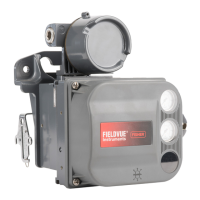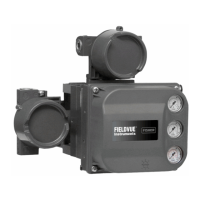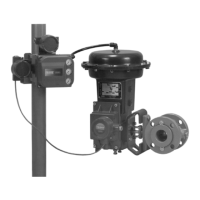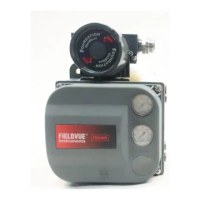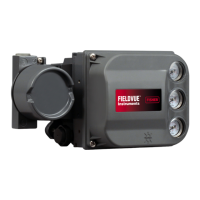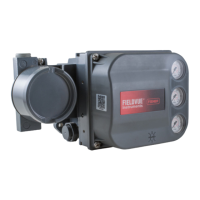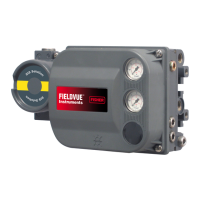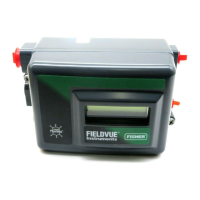DVC6000f Digital Valve Controllers
December 2009
A-2
Figure A-1. FIELDVUE DVC6000f Digital Valve Controller Block Diagram
E0408-1 / IL
DIGITAL
SETPOINT
9–32 VOLT
FIELDBUS
SUPPLY
PRESSURE
PRINTED
WIRING BOARD
PNEUMATIC
RELAY
I/P
CONVERTER
OUTPUT A
OUTPUT B
VALVE TRAVEL
FEEDBACK
AUXILIARY
TERMINALS
TERMINAL BOX
DRIVE
SIGNAL
VALVE AND ACTUATOR
Digital Valve Controller Operation
DVC6000f digital valve controllers have a single
module base that may be easily replaced in the field
without disconnecting field wiring or tubing. The
master module contains the following submodules:
current-to-pneumatic (I/P) converter, printed wiring
board assembly, and pneumatic relay. The relay
position is detected by sensing the magnet on the
relay beam via a detector on the printed wiring board.
This sensor is used for the minor loop feedback
(MLFB) reading. The master module can be rebuilt by
replacing the submodules. See figures A-1 and A-2.
DVC6000f digital valve controllers are bus-powered
instruments that provide a control valve position in
response to a digital setpoint from the control room.
The following describes a direct acting DVC6010f
digital valve controller mounted on a sliding stem
piston actuator, where the valve is closed with zero
power to the instrument.
The setpoint is routed into the terminal box through a
single pair of wires and then to the printed wiring
board assembly submodule where it is read by the
microprocessor, processed by a digital algorithm, and
converted into an analog I/P drive signal.
As the setpoint increases, the drive signal to the I/P
converter increases, increasing the I/P output
pressure. The I/P output pressure is routed to the
pneumatic relay submodule. The relay is also
connected to supply pressure and amplifies the small
pneumatic signal from the I/P converter. The relay
accepts the amplified pneumatic signal and provides
two output pressures. With relay A, an increasing
setpoint will produce increasing pressure at output A
and decreasing pressure at output B. With relay B an
increasing setpoint will produce decreasing pressure
at output B (output A is not available). With relay C an
increasing setpoint will produce an increasing pressure
on output A (output B is not available). The output A
pressure is used for double-acting and single-acting
direct applications. The output B pressure is used for
double-acting and single-acting reverse applications.
A
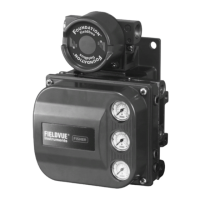
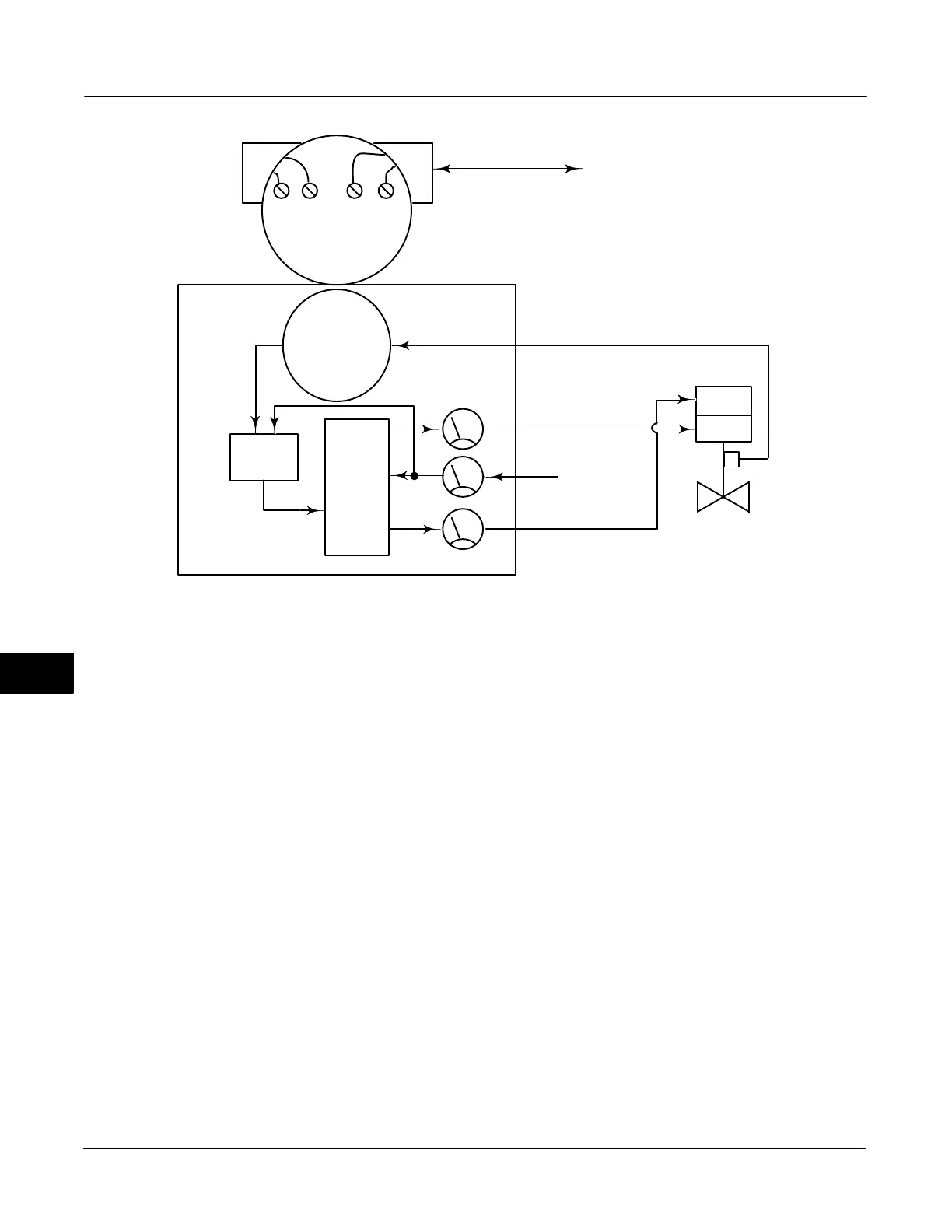